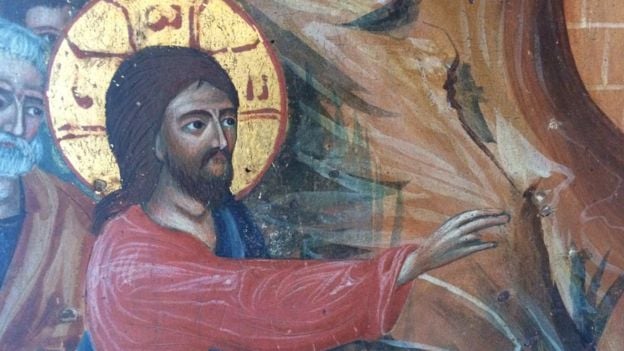
It’s nine months behind bars for a 61-year-old Latvian antiques dealer named Vasilijs Apilats. He was found guilty of stealing a 19th-century Greek painting, The Raising of Lazarus, from the Chester Cathedral in Cheshire, England, in 2014, reports the Guardian.
Police traced the painting to Apilats, an artist, collector, and art restorer, when they found his DNA on the easel where the artwork had been displayed prior to the theft. The icon was recovered amid dozens of other religious artifacts in the antiques dealer’s Cheshire home.
“I have formed the view that you committed this crime out of a simple desire to acquire the icon, rather than having any specific monetary gain in mind,” said the judge, Eric Lamb, during sentencing on January 31.
The interior of Chester Catherdral. Courtesy of Michael Beckwith and Chester Catherdral, via Wikimedia Commons and Flickr Creative Commons.
The circa-1870 painting, which was stolen in August 2014, is worth approximately £2,000 (about $2,500). It is painted on wooden board and was donated the the church by a prominent local family seven years ago.
Peter Howell-Jones, the vice-dean of Chester Cathedral, offered a statement to the court, explaining that the icon, displayed in the chapel of Saint Anselm, was “hugely important” to the congregation, who were upset by its loss.
A reproduction of the 19th-century Greek painting, The Raising of Lazarus, stolen in August 2014 from the Chester Cathedral in Cheshire, England. Courtesy of the Chester Cathedral.
In his defense during the November trial, Apilats said he bought the icon in good faith, in order to restore it, for £135 from two men he believed to be cathedral staff members. He alleged that he was told to leave the church through the back door with the painting. In place of the missing artwork, the cathedral found a wooden angel Christmas tree ornament, which Apilats insisted had nothing to do with him.
The antiques dealer moved to the UK in 1990, and claims to have been fleeing the Russian mafia. His lawyer, Peter Moss, argued that Apilats suffered from a mental disorder thanks to being mistreated by the mob.
The painting has since been returned to its proper place in the cathedral, according to a statement from Chester Cathedral constable Chris Jones to the Stoke Sentinel. “We were very saddened when the icon was taken and thought it had gone forever, so to see it returned is very special.”